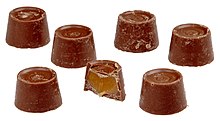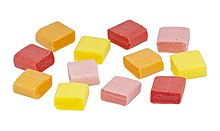
Confectionery is the art of making confections, which are food items that are rich in sugar and carbohydrates. Exact definitions are difficult. In general, however, confectionery is divided into two broad and somewhat overlapping categories: bakers' confections and sugar confections. The occupation of confectioner encompasses the categories of cooking performed by both the French patissier and the confiseur.
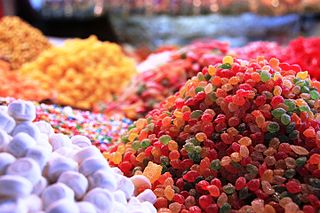
Candy, alternatively called sweets or lollies, is a confection that features sugar as a principal ingredient. The category, also called sugar confectionery, encompasses any sweet confection, including chocolate, chewing gum, and sugar candy. Vegetables, fruit, or nuts which have been glazed and coated with sugar are said to be candied.

The Wm. Wrigley Jr. Company, known as the Wrigley Company, is an American multinational candy and chewing gum company, based in the Global Innovation Center (GIC) in Goose Island, Chicago, Illinois.

The Heath bar is a candy bar made of toffee, almonds, and milk chocolate, first manufactured by the Heath Brothers Confectionery in 1928. The Heath bar has been manufactured and distributed by Hershey since its acquisition of the Leaf International North American confectionery operations late in 1996.

Ezaki Glico Co., Ltd., commonly known as Glico, is a Japanese multinational food processing company headquartered in Nishiyodogawa-ku, Osaka. It does business across 30 countries, in North America, Asia-Pacific and Europe.

Sugar candy is any candy whose primary ingredient is sugar. The main types of sugar candies are hard candies, fondants, caramels, jellies, and nougats. In British English, this broad category of sugar candies is called sweets, and the name candy or sugar-candy is used only for hard candies that are nearly solid sugar.

Junior Mints are a candy brand consisting of small rounds of mint filling inside a semi-sweet chocolate coating, with a dimple on one side. The mints are produced by Tootsie Roll Industries, and packaged in varying amounts from the so-called 'fun-size box' to the much larger 12 oz. box.

Tootsie Roll Industries is an American manufacturer of confectionery based in Chicago, Illinois. Its best-known products include the namesake Tootsie Rolls and Tootsie Pops. Tootsie Roll Industries currently markets its brands internationally in Canada, Mexico, and over 75 other countries.
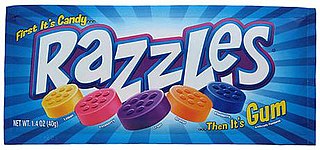
Razzles are a candy that once chewed, mix to transform into chewing gum.

Nidar is a Norwegian producer and distributor of confectionery. Nidar's candy factory is located in Trondheim, Norway. It is part of the Orkla Group.

Nestlé UK Ltd., trading as Rowntree's, is a British confectionery brand and a former business based in York, England. Rowntree developed the Kit Kat, Aero, Fruit Pastilles, Smarties brands, and the Rolo and Quality Street brands when it merged with Mackintosh's in 1969 to form Rowntree Mackintosh Confectionery. Rowntree's also launched After Eight thin mint chocolates in 1962. The Yorkie and Lion bars were introduced in 1976. Rowntree's also pioneered the festive selection box which in the UK have been a staple gift at Christmas for over a century.

Leaf International BV was a confectionery company founded in the 1940s. Leaf had sales of approximately €527m (2010) and 2,400 employees. It had 11 factories in seven countries. Leaf was owned by CVC Capital Partners, Nordic Capital, and management. Bengt Baron was the CEO of Leaf.
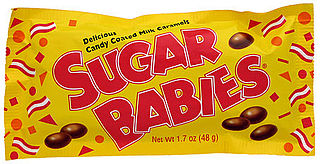
Sugar Babies are bite-sized, pan-coated, chewy milk caramel sweets which are relatively soft to chew. They are a confection originally developed in 1935 for the James O. Welch Co. by Charles Vaughan (1901-1995), a veteran food chemist and one of the pioneers of pan chocolate, who invented both Junior Mints and Sugar Babies for the James O. Welch Company. Sugar Babies were named after a song called "Let Me Be Your Sugar Baby".
Two multi-national companies, Wrigley and Cadbury, together account for some 60% market share of the worldwide chewing gum market. The global market shares for the top five chewing gum companies are estimated to be:
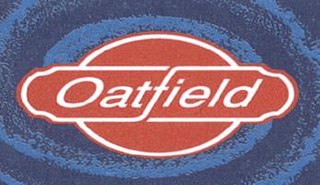
Oatfield was a chocolate and confectionery manufacturer located in Letterkenny, County Donegal, Ireland. The company was the oldest confectionery manufacturer in Ireland.

Gummies, gummi candies, gummy candies, or jelly sweets are a broad category of gelatin-based chewable sweets. Gummy bears, Sour Patch Kids, and Jelly Babies are widely popular and are a well-known part of the sweets industry. Gummies are available in a wide variety of shapes, most commonly seen as colorful depictions of living things such as bears, babies, or worms. Various brands such as Bassett's, Haribo, Albanese, Betty Crocker, Hersheys, Disney and Kellogg's manufacture various forms of gummy snacks, often targeted at young children. The name "gummi" originated in Germany, with the term "jelly sweets" more common in the United Kingdom.
















